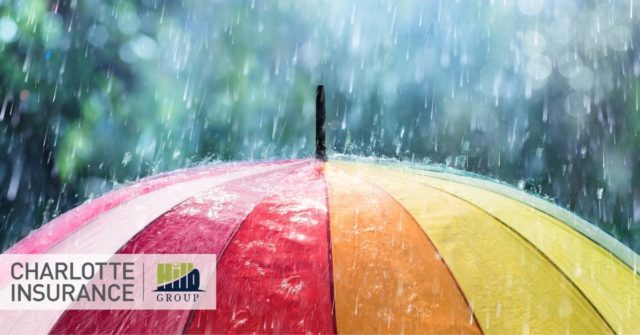Scroll through the news on your phone or turn on the evening news during dinner before or during a storm, and you’ll hear the same thing: Warnings about potential flooding. In November 2020, Charlotte was hit with historic and deadly flooding. In late March 2021, forecasters warned of flash floods and other dangers after a rainstorm.
The fact remains that flooding is a constant threat, even if you live in an area designated “minimal risk.” Where it rains, it can flood. You can’t predict it or prevent it, but you can protect yourself from flooding.
How to Protect Your Home
There are two main ways to protect your home from potential flood damage:
- Make it difficult for water to gather near or in your home.
- Buy flood insurance for when prevention measures don’t help.
Home maintenance can help many situations. Clean gutters, retaining walls, well thought out landscaping, and a driveway that gives water a place to go will go a long way in preventing localized flooding during a storm. Installing a sump pump can help move water away and prevent damage before it occurs.
Flood insurance can’t prevent damage to your home or hold back water, but it can provide necessary financial support after a flood. For those living in low risk areas, the costs are minimal. For those in high-risk flood zones, the premiums are a small price compared to total devastation and rebuilding your home and life from scratch.
How Flood Insurance Protects You
We’ve all seen the news in the aftermath of a storm. Gutted homes. People waiting in long lines to apply for assistance. Displaced families. Flooding devastates entire communities. The ability to repair your home and get back to normal can take months, sometimes years, especially for those relying on disaster assistance.
Your homeowners insurance won’t cover the vast majority of flooding perils. If you have water damage because a pipe broke, you may be protected. But a flash flood that leaves you with an inch of water in your living room won’t be covered by standard insurance policies. Only flood insurance policies handle these types of claims.
Like your standard policy, the limit of your flood insurance should be enough to help you recover. In North Carolina, the maximum policy limit for a policy backed by the National Flood Insurance Program (NFIP) is $250,000 for the structure of your home, and $100,000 for personal belongings. If you need more coverage, private insurers offer flood insurance.
After a covered peril, your policy will help you gut and repair the damage to your home or help you rebuild from the ground up.
What Flood Insurance Offers
Like all insurance policies, there are some exclusions, but more than you realize is covered under a flood insurance policy. Under a NFIP-backed policy, the following are included in coverage:
Structural Coverage:
- Walls, roof, windows, and doors
- HVAC, electrical, and plumbing
- Built-in appliances
- Flooring
- Detached garages
Personal Property Coverage:
- Furniture, curtains, electronics, and portable appliances
- Rugs and other moveable flooring
- Frozen food
- Some valuables
Debris removal is also covered in your policy.
Need more coverage than what’s available here? Several insurers offer their own flood policies that provide more options and flexibility than the NFIP-backed plans.
Ready to protect your home from flooding? Contact Charlotte Insurance today to learn more about your insurance options, either through the NFIP or directly through private insurers. Because of waiting periods for insurance to take effect, it’s better to call sooner rather than later! We can help you protect your home.

